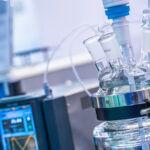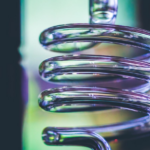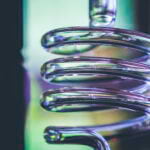
Generation of 1,2-Difluorobenzene via a Photochemical Fluorodediazoniation Step in a Continuous Flow Mode
By Kevin Simon
Desiree Znidar
Julien Boutet
Gérard Guillamot
Jean-Yves Lenoir
Doris Dallinger
C. Oliver Kappe
A proof-of-concept study for the synthesis of 1,2-difluorobenzene from 2-fluoroaniline via the Balz−Schiemann reaction using HF/pyridine as the fluorinating reagent is reported. Key to success for a fast reaction, a clean reaction profile – and thus high product selectivity – was a photochemically induced fluorodediazoniation of the in situ-generated diazonium salt performed in a continuous flow mode. A high-power 365 nm light-emitting diode provided a more robust and efficient irradiation system compared to a medium-pressure Hg lamp with respect to the reaction performance on scale-out runs and reaction time, allowing the generation of 1,2-difluorobenzene within a 10 min residence time and a product selectivity of ≥95% at full conversion.


